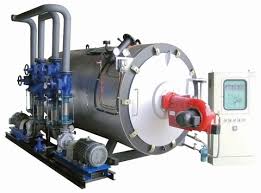
Nov . 10, 2024 18:14 Back to list
Innovations and Efficiency in Large Steam Boiler Technology for Modern Industries
Understanding Large Steam Boilers Efficiency, Applications, and Innovations
Large steam boilers are crucial components in various industrial processes, playing an essential role in energy generation and thermal applications. These heavy-duty machines convert water into steam through the combustion of fuels, producing high-temperature and high-pressure steam that can be utilized for power generation, heating, and various industrial purposes. As industries advance, the design, operation, and efficiency of large steam boilers have evolved significantly.
The Functionality of Large Steam Boilers
At their core, large steam boilers operate on simple thermodynamic principles. Water is heated in a closed vessel, causing it to transform into steam. This steam can then be harnessed to drive turbines for electricity generation or provide heat for processes such as manufacturing, food processing, and chemical production. Large steam boilers can vary in design, including fire-tube and water-tube models, each with its advantages depending on the application.
Fire-tube boilers consist of a series of tubes filled with hot gases from the combustion process, with water surrounding these tubes. This design allows for effective heat transfer and is generally more compact. On the other hand, water-tube boilers contain water-filled tubes through which hot gases pass. This type of boiler is capable of producing steam at higher pressures and is often preferred in large-scale industrial applications due to its efficiency and safety features.
Efficiency and Environmental Considerations
In an era of rising energy costs and environmental awareness, the efficiency of large steam boilers has become a focal point for manufacturers and industries alike
. Modern boilers are designed with advanced technologies that enhance their efficiency while minimizing emissions. The use of economizers, which reclaim waste heat from flue gases, and superheaters, which increase the temperature of steam, are just a couple of innovations that improve energy utilization.Enhancing boiler efficiency not only reduces operational costs but also lessens the environmental impact. The industry has seen a move towards utilizing alternative fuels, such as biomass and waste materials, which lower carbon emissions compared to traditional fossil fuels. Additionally, regulatory pressures are prompting manufacturers to adopt cleaner technologies and stricter emissions controls, driving innovation in boiler design.
Applications Across Industries
large steam boilers

Large steam boilers are employed across a multitude of industries. In power generation, they serve as critical components in thermal power plants, where steam drives turbines to produce electricity. The pulp and paper industry, food processing, chemical manufacturing, and oil refining also rely heavily on steam boilers for their operations.
In the pharmaceutical industry, for instance, precise steam generation is necessary for sterilization processes, ensuring that equipment and products are free of contaminants. The textile industry uses steam for dyeing and finishing processes, demonstrating the versatility of large steam boilers in diverse applications.
Innovations and Future Trends
The future of large steam boilers is poised for innovation. As industries seek to optimize operations and minimize environmental impact, advancements in automation and control systems are becoming commonplace. Smart boiler technology, equipped with sensors and data analytics, allows for real-time monitoring and adjustments, ensuring optimal performance and efficiency.
Moreover, the integration of renewable energy sources, such as solar thermal or geothermal systems, into steam boiler operations promises to enhance sustainability. Hybrid systems that combine conventional steam generation with renewable resources are gaining traction, paving the way for reduced reliance on fossil fuels.
Research into advanced materials for boiler construction is another focal area. Enhanced materials can withstand higher temperatures and pressures, improving boiler performance and longevity. This not only boosts efficiency but also reduces maintenance costs, ultimately leading to lower total cost of ownership over the boiler's operational life.
Conclusion
Large steam boilers are indispensable in modern industrial applications, providing critical steam required for various processes. As the demand for energy efficiency and sustainability grows, innovations in boiler technology continue to transform how these systems operate. From improved designs and alternative fuel utilization to smart technology integration, the future of large steam boilers looks promising, marking an exciting era for industry professionals and environmental advocates alike. As we continue to advance, the focus on efficiency and sustainability will likely shape the evolution of steam boilers in a rapidly changing world.
-
Oil Fired Hot Water Boilers Sale - High Efficiency & Affordable
NewsJul.31,2025
-
High-Efficiency Commercial Oil Fired Steam Boiler for Industry
NewsJul.30,2025
-
High-Efficiency Biomass Fired Thermal Oil Boiler Solutions
NewsJul.30,2025
-
High Efficiency Gas Fired Thermal Oil Boiler for Industrial Heating
NewsJul.29,2025
-
High-Efficiency Gas Fired Hot Water Boiler for Sale – Reliable & Affordable
NewsJul.29,2025
-
High Efficiency Biomass Fired Hot Water Boiler for Industrial and Commercial Use
NewsJul.29,2025
Related PRODUCTS






















